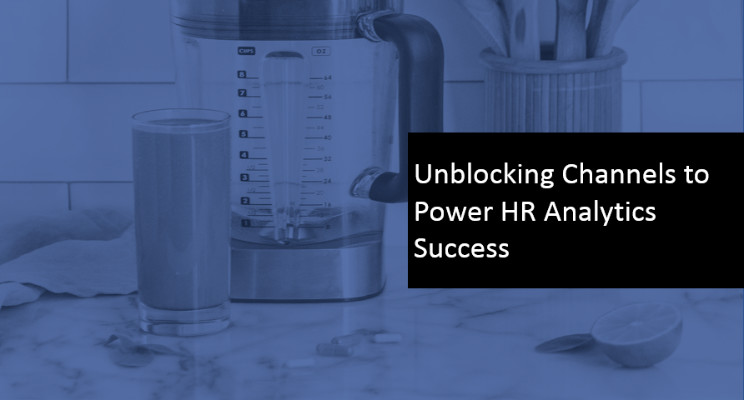
Unblocking Channels to Power HR Analytics Success
Every organization has data just waiting to be investigated and used to inform decision making. However, not every organization is accessing the insights their data have to offer. Hurdles may slow or impede your data-informed initiatives, but identify those analytical bottlenecks and you will be able to enhance your impact on executive decision-making.
Analytical bottlenecks
1. Skills
The first bottleneck is the HR team itself. With few data analytics skills and little dedicated time for analytics practice, the frequent questions from your business lines for metrics will remain descriptive, not predictive. Employees with curiosity, critical thinking and scientifically-minded traits make great analysts.
With cognitive data exploration and data visualization , it is easy to get started with analytics and predictive analytics. Cognitive analytics (Artificial Intelligence) never sleeps, never takes a vacation, and never gets sick.
2. Data Silos
HR is a fantastically data-rich department, sometimes without knowing it. Very often data are siloed and can only be handled manually. Integration of your HR systems becomes key if you want to gain speed, agility and reliability in analytics. Map your systems and databases. Ask your suppliers to enable Excel exportation or a connection between your systems with APIs (Application Programming Interface).
With cognitive analytics , agnostic tools enable you to copy and paste or to quickly download your different sets of data into the cognitive analytics platform.
3. Data Ownership
With data-based insights come opportunities for executive attention. Workforce analytics goes beyond HR when it links employee data with business performance metrics such as client retention, safety or sales. It may not always be easy to access the data you require from other departments in the organization to conduct those linkage analyses. Key will be highlighting the benefits of the intended analyses and building trust with other data owners.
With cognitive analytics , you can engage your business lines to discover more about their data and to unveil new potentials of global performance.
4. The Need for Speed
The statistical calculations needed to test your hypothesis can take days or weeks to perform when you use traditional tools. The identification of relevant variables, categories and correlations can be painfully slow. HR teams can speed up the time to insight using artificial intelligence.
With cognitive analytics , you can save time with the technical part of analytics. You find factors that induce global performance and prioritize your action plan.
5. Executive resistance
Fast and informed insights will be for nothing without executive support. It’s important to recognize that insights suggesting a course of action may have far-reaching change management implications. Having an executive forum to discuss the potential organizational impact will be helpful in having your evidence-based recommendation implemented.
With cognitive analytics , you can open business discussions based on facts and insights that demonstrate the highest impact to solve your problems. Then, you can measure early indications of your decision and execution to adjust quickly your strategy.
— — — — — —
Jean-Baptiste Audrerie is organizational psychologist, M.B.A, executive advisor for IBM Kenexa & Watson Talent in Canada and author of a HR blog. He guides clients into digital and cognitive transformation for talent attraction, acquisition, development, and engagement.
Global Head of Learning Insights & Impact Strategy at Novartis
6yGood reflection indeed!!! One of the other key aspect that I see is "Data Readiness", which refers to Quality and Categorisation of data. Sometimes even with state of the art HR Systems and most process evolved organizations, the quality of data collection remains a big lacuna. This results to Analytical exercises delayed with mandatory data quality assessment and cleanup drives resulting into lean process improvement projects.